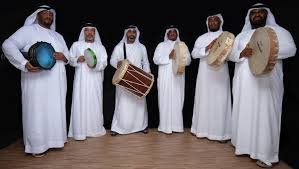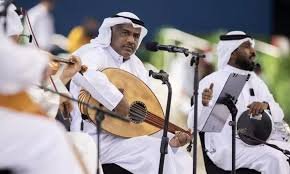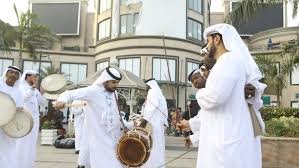Celebrating the rich tapestry of traditional Emirati music and instruments, a cultural resurgence is underway—bringing heritage back to its rightful place at the heart of community life.
Emirati music is deeply woven into the nation’s historical fabric, born from the rhythms of the desert, sea, and tribal traditions. Iconic instruments like the oud, rebāb, tambura, and various percussion drums have for centuries brought people together during celebrations, storytelling sessions, and daily work. Today, initiatives across the UAE are reigniting interest in these sounds, ensuring they’re not just remembered—but heard again—in vibrant new ways.
Historic instruments, living heritage

From its earliest days, traditional Emirati music served as both entertainment and a communal experience. The oud, a pear-shaped stringed instrument, is considered one of the Middle East’s oldest. It remains central to Arabic music—melodies flowing through gatherings at cultural institutions such as Bait Al Oud in Abu Dhabi, where crafting and teaching meet performance.
The rebāb, a bowed string instrument, traditionally accompanied poetic recitations in the majlis, amplifying the resonance of Nabati poetry. Its simplicity—a single string—belies its powerful cultural role, tying music with the art of spoken verse.
Percussion instruments—al-ras, takhamir, daf, doumbek, and more—form the backbone of Emirati rhythm. These drums gave life to dances like Al-Ayyala and Yowlah, both UNESCO-recognized in 2014. The al-ras drum, in particular, set the pace for battle dances symbolizing unity and courage.
Echoes of nomadic perseverance
In coastal and desert communities, music accompanied daily tasks—from pearl diving to livestock herding. Leaders on pearl-diving dhows used song to synchronize effort. Over time, music became a vessel for oral traditions, carrying stories about bravery, love, and faith from generation to generation.
The tambura, originating in the Nubian region, remains one of the few surviving traditional instruments. Players like Taher Ismail, who learned at age ten, spotlight the instrument’s soulful power—but also the challenge of passing knowledge on amid waning interest .

Contemporary revival and creative fusion
Despite concerns that traditional music might fade—older generations remain its last custodians—efforts are growing to keep it alive. The Sharjah Directorate of Heritage is exploring plans for a dedicated traditional music college, while Bait Al Oud sustains oud crafting and education.
Music has also evolved through cultural exchange. The UAE’s history as a trade hub introduced sounds and instruments from East Africa, Persia, India, and beyond. Hybrid styles like Liwa, born of Afro-Arab rhythms, and Sha‘abi al-Emirati, reflect the nation’s cosmopolitan spirit Today, instruments like the sitar and tabla are being integrated into local music scenes
Modern Emirati composers and artists continue this tradition of fusion. Global figures like Mohammed Fairouz and Ihab Darwish blend traditional sounds with orchestral expression, enriching national celebrations and festivals. Meanwhile, pop artists such as Hussain Al Jassmi showcase national pride through hits like “Boshret Kheir,” which has exceeded 700 million YouTube views.
Dance and celebration: instruments in motion
Music and dance are inseparable in Emirati culture. Al-Ayyala and Yowlah are communal performances combining music, poetry, and rhythm in warrior-style battle dances featuring bamboo sticks, rifles, and elaborate footwork.
Liwa, with its African-rooted mizmar flute and drums, is often performed by coastal communities during weddings and festivals . These dances bridge history and identity—echoing past conflicts, successes, and migrations.

Saving the sound of a nation
Despite growing appreciation, traditional Emirati music faces a crisis of survival. Many young Emiratis perceive it as outdated or insufficiently prestigious. With few youth stepping up, older musicians fear their craft could end with them.
Yet, a revival is emerging. Cultural festivals, heritage centers, and educational institutions are bringing instruments and performances back into the public eye. Bait Al Oud, Sharjah museum programs, and events like Qasr Al Hosn Festival and Sheikh Zayed Heritage Festival offer live demonstrations and interactive learning on oud, rebāb, tambura, and percussion
Looking ahead: a rhythm renewed
The road ahead is promising but demands sustained commitment. The proposed music college in Sharjah could become a national hub for teaching and preserving heritage instruments . Elsewhere, artists and cultural bodies are fusing old and new: combining oud with orchestras, rebāb with rap, drums with digital beats.
This fusion doesn’t dilute tradition—it strengthens it, ensuring its rhythms continue to resonate with new generations. The slow, melodic outro of the tambura or the thunderous al‑ras drumbeat may soon find a place in techno remixes or concert halls—but their bedrock remains cultural identity.

Conclusion
Traditional Emirati music and instruments represent more than entertainment; they’re vessels of history, identity, and community. As the UAE modernizes, preserving these sounds ensures continuity—a soundtrack that tells the story of a nation’s origins and aspirations. The revival underway is not just cultural—it’s essential. With renewed focus, resources, and creativity, the old melodies can find new homes in the hearts of Emiratis—ensuring that this harmonious legacy endures for decades to come.
Do follow UAE Stories on Instagram.
The History Behind the Majlis: UAE’s Traditional Gathering Space













